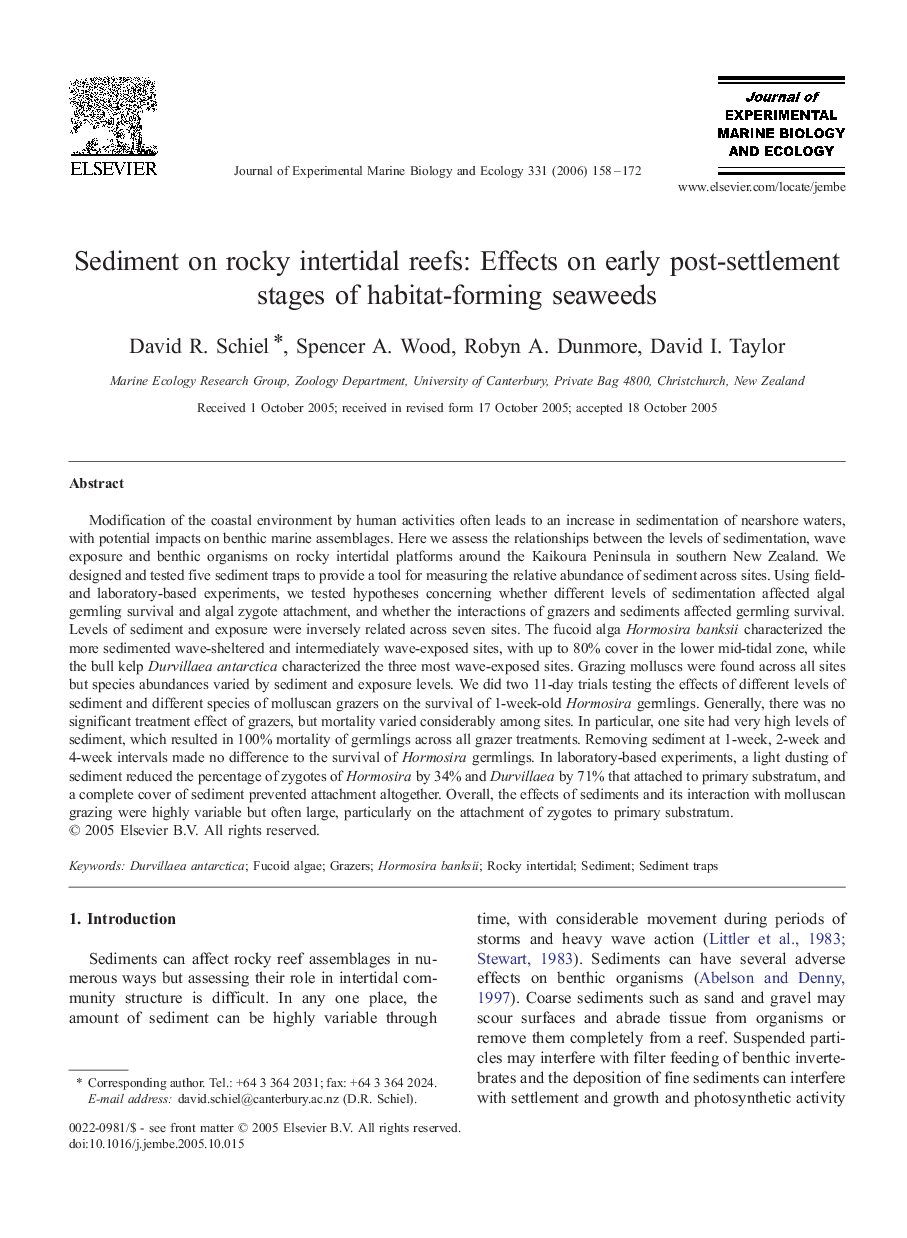| کد مقاله | کد نشریه | سال انتشار | مقاله انگلیسی | نسخه تمام متن |
|---|---|---|---|---|
| 4398164 | 1305929 | 2006 | 15 صفحه PDF | دانلود رایگان |

Modification of the coastal environment by human activities often leads to an increase in sedimentation of nearshore waters, with potential impacts on benthic marine assemblages. Here we assess the relationships between the levels of sedimentation, wave exposure and benthic organisms on rocky intertidal platforms around the Kaikoura Peninsula in southern New Zealand. We designed and tested five sediment traps to provide a tool for measuring the relative abundance of sediment across sites. Using field- and laboratory-based experiments, we tested hypotheses concerning whether different levels of sedimentation affected algal germling survival and algal zygote attachment, and whether the interactions of grazers and sediments affected germling survival. Levels of sediment and exposure were inversely related across seven sites. The fucoid alga Hormosira banksii characterized the more sedimented wave-sheltered and intermediately wave-exposed sites, with up to 80% cover in the lower mid-tidal zone, while the bull kelp Durvillaea antarctica characterized the three most wave-exposed sites. Grazing molluscs were found across all sites but species abundances varied by sediment and exposure levels. We did two 11-day trials testing the effects of different levels of sediment and different species of molluscan grazers on the survival of 1-week-old Hormosira germlings. Generally, there was no significant treatment effect of grazers, but mortality varied considerably among sites. In particular, one site had very high levels of sediment, which resulted in 100% mortality of germlings across all grazer treatments. Removing sediment at 1-week, 2-week and 4-week intervals made no difference to the survival of Hormosira germlings. In laboratory-based experiments, a light dusting of sediment reduced the percentage of zygotes of Hormosira by 34% and Durvillaea by 71% that attached to primary substratum, and a complete cover of sediment prevented attachment altogether. Overall, the effects of sediments and its interaction with molluscan grazing were highly variable but often large, particularly on the attachment of zygotes to primary substratum.
Journal: Journal of Experimental Marine Biology and Ecology - Volume 331, Issue 2, 18 April 2006, Pages 158–172